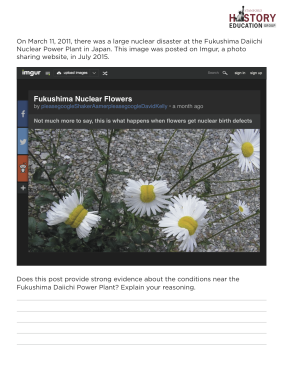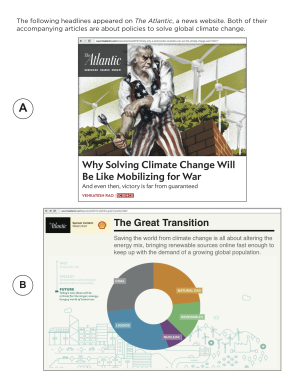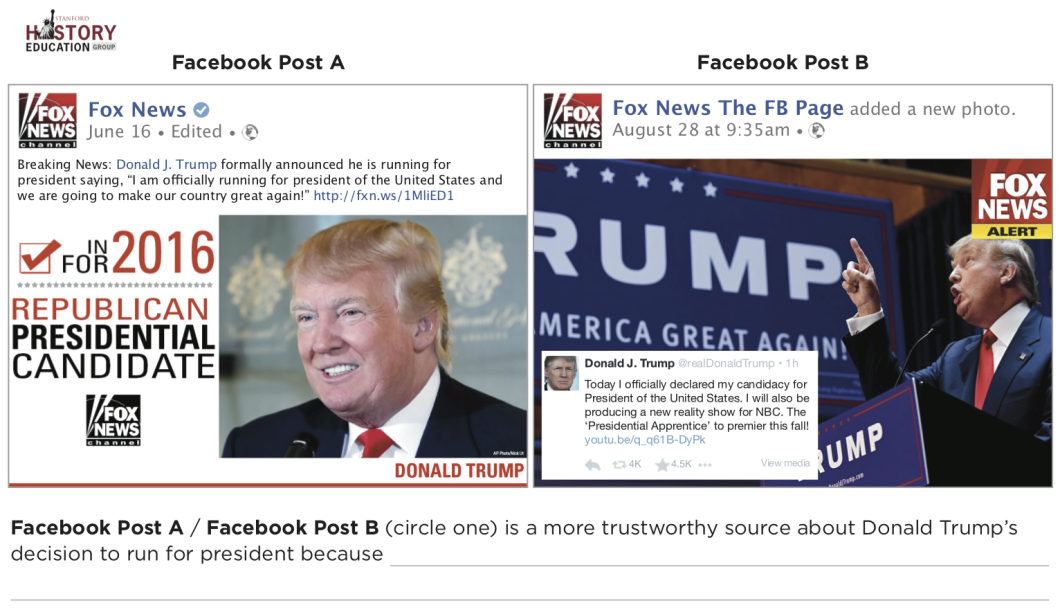Study: Students “Easily Duped” By Fake News, Sponsored Content Image courtesy of Jason Cook
You might assume that a child raised on online content may be better positioned to tell when news and information is coming from legitimate sources and when that source is a fake or an ad. However, the results of a new study appear to indicate that this always-connected generation is no better equipped to sort fact from fiction online.
“Overall, young people’s ability to reason about the information on the Internet can be summed up in one word: bleak,” concludes a new report from researchers at Stanford Graduate School of Education, which found that “when it comes to evaluating information that flows through social media channels, [today’s students] are easily duped.”
The researchers developed fifteen different “assessments” — five for middle school students, five for high-schoolers, and five for college students — to determine subjects’ ability to evaluate news items, social media posts, online comments, comments, and advertising.
 For example, middle school students were shown this screengrab of the Slate.com homepage (click image to enlarge) and asked to first determine if each of the three items was an advertisement, and then explain how they came to that conclusion.
For example, middle school students were shown this screengrab of the Slate.com homepage (click image to enlarge) and asked to first determine if each of the three items was an advertisement, and then explain how they came to that conclusion.
In general, students figured out that the top banner image for “Gotham Writers” was an ad based on things like the coupon code, the little blue “X” in the corner, and the lack of a headline or author.
Things were a little less clear regarding “Should California Stop Growing Almonds?” Some students correctly identified it as an article because of the lack of typical ad markers, but at least one student concluded it was an ad “because they are trying to persuade people that almonds aren’t bad and that you should buy them.”
Finally, the Women-in-tech sponsored content caused the most confusion. While some were able to clearly identify that this is an ad being presented in the form of a story, others thought that “sponsored” meant that Slate was promoting the story for more people to see it, while other students didn’t realize it was an ad at all.
“There is nothing to suggest that something is sold,” writes one student. “No money, deals, etc. It sounds like an article.”
The researchers say that more than 80% of the students assessed believed that this “sponsored content” was a real news story.
“Some students even mentioned that it was sponsored content but still believed that it was a news article,” reads the study. “This suggests that many students have no idea what ‘sponsored content’ means and that this is something that must be explicitly taught as early as elementary school.”
Another middle school assessment showed students the following post written by a Bank of America executive and sponsored by the bank. The students then had to explain why someone might not trust this article.

A number of students responded with answers that had little or nothing to do with the potential bias of the author or the commercial interest of the bank sponsoring the story.
“I wouldn’t trust it because some millennials do have good money habits,” wrote one student, while another simply made the blanket statement that “many online web posts are frauds.”
 Among the assessments given to high schoolers was the image to the right. Posted on imgur in July 2015, it purports to be an image of flowers taken near the Fukushima nuclear power plant in Japan, which was damaged by a tsunami in March 2011. Students were asked if this context-free, unsourced image provides “strong evidence about the conditions near the Fukushima Daiichi Power Plant?”
Among the assessments given to high schoolers was the image to the right. Posted on imgur in July 2015, it purports to be an image of flowers taken near the Fukushima nuclear power plant in Japan, which was damaged by a tsunami in March 2011. Students were asked if this context-free, unsourced image provides “strong evidence about the conditions near the Fukushima Daiichi Power Plant?”
Only 20% of the high school students responded in a way that pointed out the lack of sourcing on the photo — no evidence that the image was taken at or near the power plant, no photographer named, no idea if the person posting the photo is the photographer — while double that number of students argued that the imgur post provides strong evidence or used incorrect or incoherent reasoning to explain their reasons for doubting the image.
 Just like their middle-school counterparts, high school students were frequently fooled by sponsored content.
Just like their middle-school counterparts, high school students were frequently fooled by sponsored content.
Some 200 high schoolers were shown two climate-related pieces published on The Atlantic‘s website — one an actual news article and one a chart infographic sponsored by Shell — and asked to determine which of the two was the more reliable source for learning about climate change policies. The results were not great.
“Nearly 70% argued that the Shell article was more reliable because it provided more data and information about the problem,” says the study. “In contrast, only about 15% of respondents wrote that the article from the ‘Science’ section was more reliable than a sponsored post by Shell.”
Students also had difficulty distinguishing between social media posts from an actual news source and a lookalike fake source. They were presented with the following election-related posts on Facebook — one from the actual Fox News account, and one from something called “Fox News the FB Page”:

Only 25% of students identified the actual Fox News post as the actual news story, while 30% argued that the lookalike clone had the better bona fides because it included a screengrab of a Tweet from then-candidate Trump.
“This finding indicates that students may focus more on the content of social media posts than on their sources,” concluded the researchers. “Despite their fluency with social media, many students are unaware of basic conventions for indicating verified digital information.”
At the college level, students were tasked with more research-oriented questions, like evaluating a social media claim that Planned Parenthood founder Margaret Sanger. A Google search on the issue will bring up multiple, wildly differing opinions on the matter, and some 60% of students failed to do more than just summarize the most popular results of the search, regardless of the source or any biases.
“Making sense of search results is even more challenging with politically charged topics,” the researchers said. “A digitally literate student has the knowledge and skill to wade through mixed results to find reliable and accurate information.”
Facebook, Twitter, and other online platforms have come under fire in recent months for their roles in allowing fake news stories and unfounded rumors to take root and grow. At the same time, the authors of the Stanford study say more needs to be done to educate young minds to help them learn to better parse the things they are bombarded with. To that end, the researchers have developed a curriculum based on these assessments that is already in use in some schools.
“As recent headlines demonstrate, this work is more important now than ever,” explains Professor Sam Wineburg, the lead author of the report and founder of the Stanford History Education Group. “In the coming months, we look forward to sharing our assessments and working with educators to create materials that will help young people navigate the sea of disinformation they encounter online.”
Want more consumer news? Visit our parent organization, Consumer Reports, for the latest on scams, recalls, and other consumer issues.

